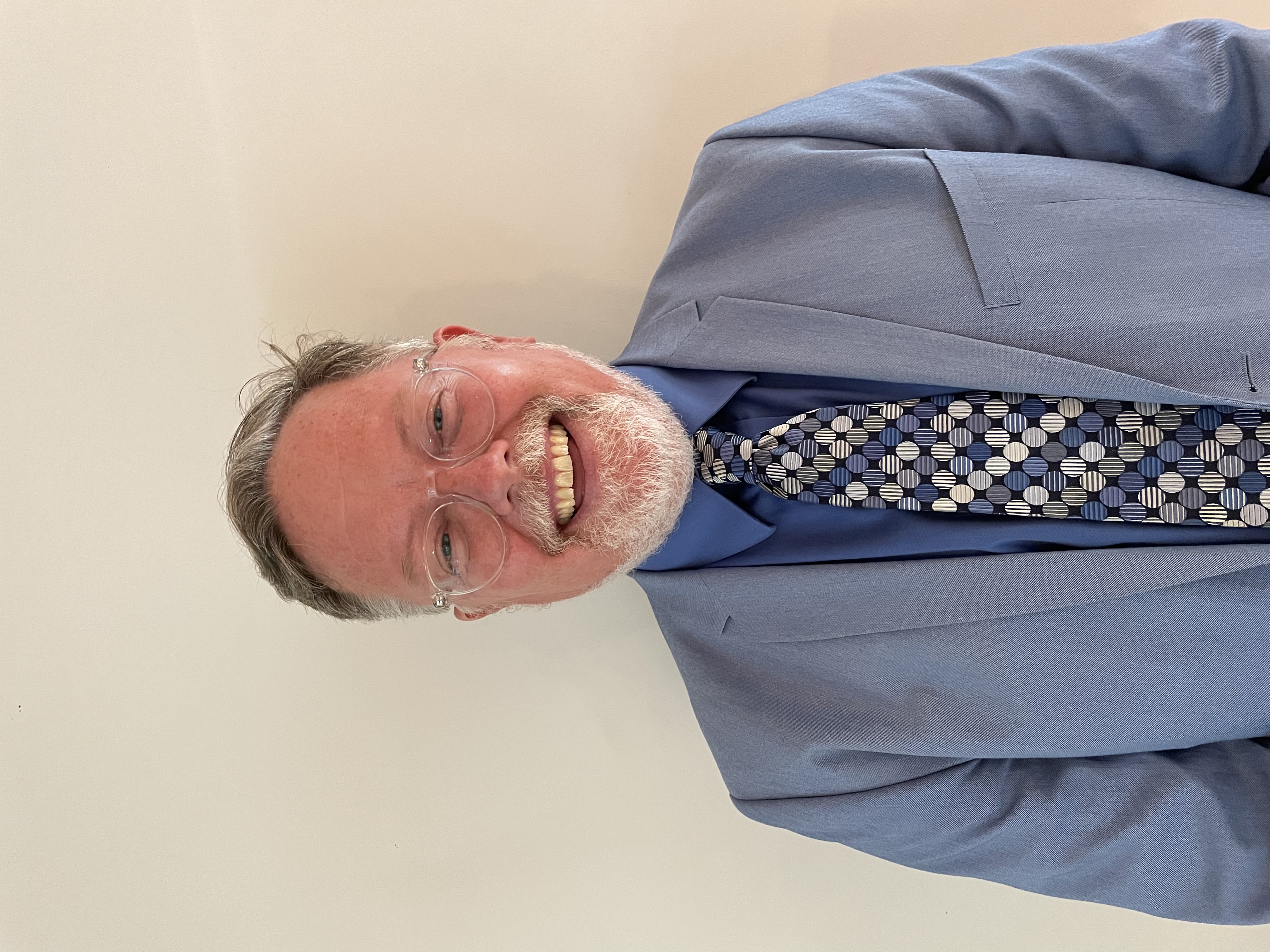
Title: 30,000 Nano Implants in Human with No Failures…And Still Counting
Plenary Speaker
Prof. Thomas Webster
Brown University, USA
Abstract
Nanomedicine is the use of nanomaterials to improve disease prevention, detection, and treatment which has resulted in hundreds of FDA approved medical products. While nanomedicine has been around for several decades, new technological advances are pushing its boundaries. For example, this presentation will present an over 25 year journey of commercializing nano orthopedic implants now in over 30,000 patients to date showing no signs of failure. Current orthopedic implants face a failure rate of 5 – 10% and sometimes as high as 60% for bone cancer patients. Further, Artificial Intelligence (AI) has revolutionized numerous industries to date. However, its use in nanomedicine has remained few and far between. One area that AI has significantly improved nanomedicine is through implantable sensors and neurological applications. This talk will present research in which implantable sensors, using AI, can learn from patient’s response to implants and predict future outcomes. Such implantable sensors not only incorporate AI, but also communicate to a handheld device, and can reverse AI predicted adverse events. Examples will be given in which AI implantable sensors have been used in neurology to inhibit implant infection and promote prolonged neural function. Moreover, in vitro and in vivo experiments will be provided that demonstrate how nanotechnology can be incorporated into neurology to help human health.
Biography
Thomas J. Webster’s (H index: 130) degrees are in chemical engineering from the University of Pittsburgh (B.S., 1995; USA) and in biomedical engineering from RPI (Ph.D., 2000; USA). He has formed over a dozen companies who have numerous FDA approved medical products currently improving human health in over 30,000 patients. His technology is also being used in commercial products to improve sustainability and renewable energy. He is currently helping those companies and serves as a professor at Brown University, Saveetha University, Hebei University of Technology, UFPI, and others. Dr. Webster has numerous awards including: 2020, World Top 2% Scientist by Citations (PLOS); 2020, SCOPUS Highly Cited Research (Top 1% Materials Science and Mixed Fields); 2021, Clarivate Top 0.1% Most Influential Researchers (Pharmacology and Toxicology); 2022, Best Materials Science Scientist by Citations (Research.com); and is a fellow of over 8 societies. Prof. Webster is a former President of the U.S. Society for Biomaterials and has over 1,350 publications to his credit with over 55,000 citations. He was recently nominated for the Nobel Prize in Chemistry. Prof. Webster also recently formed a fund to support Nigerian student research opportunities in the U.S.

Title: “ATMOS Global ™ – SymbioEQ ™ – Future-proofing Leadership and Culture in Hybrid Workforces of Humans, Ai and Automation Shaping Tomorrow’s Enterprise Across Generations”
KEYNOTE SPEAKER
Dr. Orestis Denis Valianatos
Global President and CEO, ATMOS Global Pty Ltd (ATMOS Global™), Australia
Abstract
In an era where artificial intelligence and humanoid robots are reshaping industries, leaders face a critical challenge: how to integrate these technologies without sacrificing the human elements that drive innovation, trust, and organisational culture. ATMOS Global ™ ’s SymbioEQ ™ offers a groundbreaking framework for senior leaders to design strategies that harmonise humans, humanoids, and AI agents into a cohesive, high-performing workforce.
SymbioEQ ™ is a holistic leadership blueprint that fosters a harmonious integration of human potential, technology and ecosystems to promote mutual benefit and sustainable growth. It is a purpose-driven framework aimed at creating the enterprise of the future that is people-centric, sustainability-driven and technology-forward.
SymbioEQ ™ prioritises human skills alongside technological advancements managing the relationships between humans, Ai and automation in ways that are emotionally intelligent and sustainable to enhance productivity while maintaining human well-being.
This keynote unveils how
SymbioEQ
™ combines emotional intelligence (EQ) with cutting-edge AI integration principles to prepare organisations for future challenges by focusing on adaptability and inclusivity and transform the workplace into a symbiotic ecosystem - where humanity and technology don’t just coexist, but thrive together.
Biography
Dr Orestis D. Valianatos is the Global President and CEO of ATMOS Global Pty Ltd (ATMOS Global ™), a highly accredited and accomplished professional company director, an astute investor in the capital markets, an established innovator, a role model, a visionary thinker with a diverse portfolio of formal qualifications (BSc, MSc, PhD in Atmospheric Physics, Climate & Sustainability, Master of Business Administration, Professional Doctorate in International Business and Sustainability, Corporate Governance training as a Professional Board Director, and soon a Diploma of Finance), experience, unique insight and influential global perspective across multiple domains including artificial intellignce, leadership, strategy and innovation, sustainability, ESG, climate-tech, thematic and sustainable investing. Entrepreneur and agent of change, he has authored more than 50 ground-breaking international research papers as a subject matter expert working in partnership with senior personnel from government departments, universities and major private clients from the mining, manufacturing, energy & utilities, health and finance sectors.

Title: New Algorithms For Computer Graphics
Plenary Speaker
Dr. Glenn Tony Manuel Barrera
Prairie View A&M University, Texas USA
Abstract
Computer graphics has been evolving fast the previous century, many methods and approaches has been lifted forward, standard methods as clipping, 2d and 3d polygon rendering and also many other rendering methods as raytracing , z-buffer and pixel pumpers was fast seeing the light, also very much in commercial applications. Dispite the immense production, there can still be found a lot of new very efficient and fundamental algorithms that improve graphics on a fundamental plane.
We will present some new developed algorithms. such as: Redshift colouring, Compressed multiple angle rotation derivations,... and many more,...
Biography
Tony Barrera is a certified autodidact math genius. He have published more than 42 Ordinary high rated scientific papers And up to several hundred publications ,computer simulations and animations In different subjects, scientific papers in mathematics , computer graphics, numerical analysis, astrophysics and Particle Atomic physics. Tony does research general together with prof Ewert Bengtsson, Prof Anders Hast and Physicist Bo Thelin and the crew of Barrera Science Lab. Tony Barrera have been working for the company AB Consonant with implementation of the Fast Fourier Transform, FFT , and as a computergrahics researcher at Cycore AB (Webbgraphics). Constructor of about 10 - 20 different Graphics Engines , Assembler ,Basic, Pascal and/or C++ computer languages. Started with mahematics and science at age 3, got the first Astronomy book (from mother Elisabeth Mercadal) at 9, the first Chemistry set at 10 , Chief (head) of Barrera Science Lab.

Title: Prospective antibacterial evaluation of metal-doped oxide nanoparticles
Keynote Spekaer
Prof. Paulo C. De Morais
University of Brasilia, Brazil
Abstract
This keynote talk is focused on Cu-doped tin oxide (SnO2) spherical nanoparticles (mean size 8.3 nm), which were synthesized and tested against two bacteria cultures, namely the Gram positive Staphylococcus aureus (S. aureus) and the Gram negative Escherichia coli (E. coli). The traditional disc diffusion-test bioassay is revisited within the perspective of using a mathematical approach grounded on the standard as well as on the modified Hill model. Importantly, the Hill model was established in 1910 to account for the binding of oxygen molecules to hemoglobin and since then has been used as a standard model for evaluation of a wide plethora of experimental situations, including cell viability assays. Although limited in terms of variety of challenging materials and bacteria cultures, the success of the proposed mathematical approach while explaining the experimental data is quite impressive. The outcomes of the present analysis point quite favorably toward the general use of it in the very near future. New concepts, such as the biological size and the biological size dispersity, for instance, will emerge naturally from the data analysis reported in the talk.
Biography
Professor Paulo César De Morais, PhD, was full Professor of Physics at the University of Brasilia (UnB) – Brazil up to 2013. Appointed as UnB’s (Brazil) Emeritus Professor (2014); Visiting Professor at the Huazhong University of Science and Technology (HUST) – China (2012-2015); Distinguished Professor at the Anhui University (AHU) – China (2016-2019); Full Professor at the Catholic University of Brasília (CUB) – Brazil (2018); CNPq-1A Research Fellow since 2010; 2007 Master Research Prize from UnB. He held two-years (1987-1988) post-doc position with Bell Communications Research, New Jersey – USA and received his Doctoral degree in Solid State Physics (1986) from the Federal University of Minas Gerais (UFMG) – Brazil. With more than 13,500 citations, He has published more than 500 papers (Web of Science), presented more than 200 invited talk (35 countries), and filed 16 patents.

Title: Lessons Learnt about the evaluation of the Cybersecurity Regulations in the Navigation Sector
Keynote Spekaer
Dr. Jose Ramon Coz Fernandez
European Space Agency, Netherlands
Abstract
The Navigation sector represents a relevant economic sector, and the navigation programs represent currently one of the biggest investments programs in the Europe Union. According to the European Union Space Policy, the GNSS (Global Navigation Satellites Systems) programs play an important role, and the estimated budget for the space programme, according to the current status of the multiannual financial framework for 2021-2027, is around 14 billion euros in current prices. Cybersecurity audits are considered critical within these programs. The cybersecurity audits are described as the evaluation of the level of compliance of the information security management system and implemented security measures with defined requirements, security policies in place and the appropriate safety standards. The conference will highlight the importance of regulations when performing the execution phase of these cybersecurity audits, and the most relevant lessons learnt at the European Space Agency about this topic. In this conference, the author will introduce the concept of cybersecurity audits, explain some of the factors that contribute to the complexity of the projects in the space sector along the supply chain, and describe how the regulatory framework impacts the audit process to conclude with some recommendations to be taken into account to facilitate the process.
Biography
Dr. Jose Ramon Coz finished his PhD degree in Economy at the Complutense University (Madrid). As well, he finished a second PhD degree in Computer Engineering at the UNED University (Madrid). He holds an M.S in Physics (University of Cantabria), an M.S. in Economics (Complutense University) and several graduate degrees in Telecommunications and Public Management (Polytechnic University of Madrid). He has more than twenty years of experience in the field of auditing and cybersecurity. I am currently working as the Cyber Internal Audits Head at the European Space Agency, and as a professor at several institutions and universities.

Title: A Transient Bulk Queue with Reneging and Service Setup Time
Plenary Speaker
Prof. Aliakbar Montazer Haghighi
Prairie View A&M University, Texas USA
Abstract
In this paper, we analyze a transient queuing model, in which tasks arrival in bulks of varying sizes with compound Poisson process. There is a single server serving batches of tasks with limited sizes with a minimum and a maximum, according to exponential distribution. Also, there are setup times for service with also exponential distribution. There is a possibility that impatient tasks renege while the server is busy with also exponential distribution. The transient probability generating function for the number in the system, special cases to verify it, and some performance measures have been found.
Biography
Aliakbar Montazer Haghighi is a professor and former Head of the Mathematics Department at Prairie View A&M University, Texas, USA. He received his Ph.D. in Probability and Statistics from Case Western Reserve University, Cleveland, Ohio, USA, both his BA and MA in Mathematics from San Francisco State University, California, USA. His research publications, in probability, statistics, stochastic processes, queueing theory, and fuzzy set theory, are extensive and some are partially included in his mathematics books, a book-chapter, and lecture notes. He is the Co-Founder (2004) and former Editor-in-Chief of Application and Applied Mathematics: An International Journal (AAM).
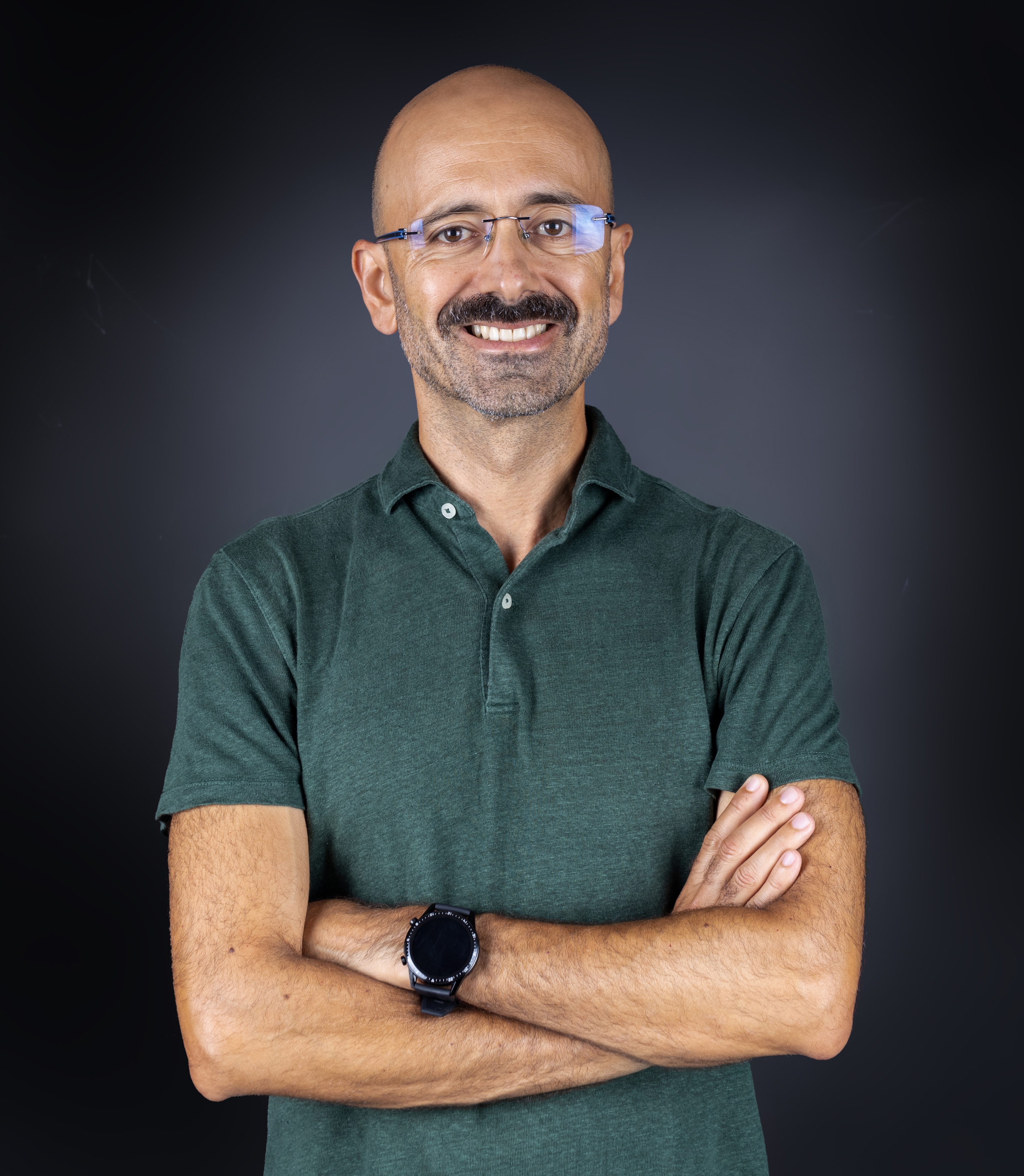
Title: Accelerating Green Hydrogen Production Through Materials Innovation
KEYNOTE SPEAKERS
Prof. Diogo M.F. Santos
CeFEMA and Instituto Superior Técnico, ULisboa, Portugal
Abstract
Despite growing public interest in hydrogen (H2) as a clean energy carrier, over 95% of H2 produced in Europe still derives from fossil fuels. To transition toward a climate-neutral economy, green hydrogen, which is produced from water electrolysis powered by renewable energy sources, must become more efficient and cost-competitive. Our research work adopts a three-branched materials innovation strategy to enhance the performance and affordability of alkaline water electrolysis (AWE), a mature and scalable green H2 production technology.
The first approach focuses on developing efficient and durable electrocatalysts for the hydrogen and oxygen evolution reactions (HER/OER). Ni-based electrodes are fabricated using the dynamic hydrogen bubble template technique, which generates porous 3D architectures with an enhanced active surface area, strong mechanical stability, and improved electron transfer, avoiding the use of insulating polymeric binders.
The second approach targets the membrane, a critical and costly component of AWE systems. We are designing thin, robust, and highly conductive anion-exchange membranes using inexpensive biopolymers and sustainable pathways (avoiding hazardous solvents), aiming for high OH⁻ selectivity and long-term chemical resilience.
The third approach involves tailoring the electrolyte by incorporating small amounts of ionic liquids, including those with magnetic properties. These additives enhance the HER/OER process and promote gas bubble detachment from the electrodes, thereby reducing interfacial resistance and improving ionic transport, which ultimately lowers the overall energy demand.
Together, these synergistic innovations in electrodes, membranes, and electrolytes aim to accelerate the large-scale adoption of green hydrogen, helping to reduce greenhouse gas emissions and strengthen energy independence in the EU.
Biography
Diogo M.F. Santos is a Principal Researcher at CeFEMA and an Invited Assistant Professor at Instituto Superior Técnico (ULisboa, Portugal). His current work focuses on the development of electrodes and membranes for fuel cells and electrolyzers. D.M.F. Santos has authored over 200 publications; his current h-index is 40. He has been listed since 2020 on Stanford University's “World’s Top 2% Scientists list.” His research interests are related to electrochemical energy conversion and storage. He is the leader of “WG4. Communication and Dissemination” of WIRE COST Action.
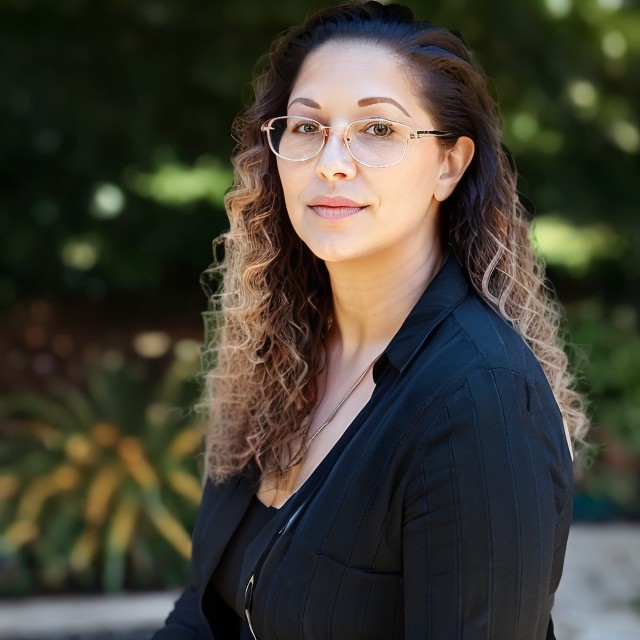
Title: Engineering Trust in Digital Ecosystems: Human-Centered Strategies for Resilient Technological Innovation
SPEAKER
Mrs Nia Luckey
AT&T, USA
Abstract
In an era of accelerated digital transformation, the imperative for trustworthy technology transcends theoretical discourse—it demands actionable, interdisciplinary solutions. This presentation bridges applied science, systems engineering, and human-centered design to address the critical role of trust as a catalyst for sustainable innovation within complex technological ecosystems.
Drawing on empirical cybersecurity frameworks and principles from behavioural science, we examine strategies for designing transparent systems that foster authentic collaboration and user empowerment. Key themes include:
Applied Trust Models: Engineering resilient processes through shared values, verifiable transparency, and ethical design.
Interdisciplinary Synergy: Leveraging human-centered methodologies to align technology with organizational and societal resilience.
Innovation Amplification: Demonstrating how trust-driven systems unlock scalable growth, adaptive problem-solving, and cross-functional collaboration.
Attendees will gain evidence-based insights to transform trust from an abstract ideal into a measurable engineering priority—enabling professionals across technology, applied sciences, and leadership to build infrastructures that thrive on integrity and collective advancement.
Biography
Nia Luckey pioneers the convergence of cybersecurity, behavioural science, and systems engineering to architect trustworthy digital futures. A globally recognized TEDx speaker and trusted advisor to Fortune 100 enterprises, she translates complex technological challenges into actionable frameworks for ethical innovation. As co-author of The CISO Playbook and author of the upcoming Trust Hacked: What Firewalls, Failures, and the Frontlines Taught Me About Trust, Nia grounds her methodologies in real-world resilience, empowering organizations to embed transparency and human-centricity into their technological DNA. Her work redefines trust as a catalyst for advancing cross-sector collaboration

Title: Role of ‘Quantum Computing Cooling’ to Control Global Warming by ‘Quantum Computing Airconditioning Technology’.
PLENARY SPEAKER
Dr. Virendra Goswami
Indian Institute of Technology (IIT) & ‘Environment and Peace Foundation’, India
Abstract
The efforts are to employ Bose-Einstein condensation (BEC) in dilute gases fundamental quantum-mechanical processes, for the detoxification of Green House Gases and other toxins to control Global Warming vis-à-vis Climate change, using Physiochemical processes and generating Bose-Einstein Condensate of Cobalt (Co), and its three forms of Cobalt Oxide viz. CoOI, CoOII, CoOI-II , and Co2O3. All these Oxides of Cobalt differ in their physicochemical characteristics and atomic structures (3d6 & 3d7), and hence it’s worth to study the correlation pf physiochemical characteristics of Cobalt Oxides with Catalytic activity and develop Magnetic Refrigeration Technology. Next, to develop “Hybrid ‘Q-CAT’-System” in the proposed four Paired- Modules, pairing with “Comfortable Normal Chill” &” Big Chill” and one Coupled Module of Comfortable normal Chill ‘and Big Chill’ i.e. ‘Pentagonal Module’; with a scope of improvement to Hexagonal and Heptagonal- Q-CAT Modules by using ‘Triple Cooling Technology’(TCT) comprising Conventional, Quantum Computing Cooling, and ‘Magnetic Refrigeration Technology’(VG-MRT), developed by Dr. Virendra Goswami in past. Then, the proposed modules would be developed to convert toxic gases e.g. Green House Gases (CH4, NOX,) and other toxins into non-toxic entity using Physicochemical process to control Environmental Pollution and Global Warming vis-à-vis Climate Change by using Catalytic Oxides of the first row of transition metals. Next, Catalytic Toxic Absorbers would be developed to absorb toxic gases e.g. Green House Gases (CH4, NOX,) and other toxins using Chemisorption, Surface Area, Magnetic Susceptibility, Differential Thermal Analysis, and Catalytic activity, employed by the author in the past.
Biography
Dr. Virendra Goswami, Ph.D. Indian Institute of Technology, Kharagpur, MS from the University of Wisconsin, Post Doctorate Fellow at the University of Illinois, Chicago, USA. ‘Visiting Scientist’: NASA, WMO, NCAR, ICAO, (UNIDO- ICTP-ITALY.). Founder President’ of ‘Environment and Peace Foundation’ & Wing Commander (Retd.) with more than 550 hours of flying as a supernumerary Aircrew. Recently, he has been awarded ‘Distinguished Alumnus Awardee-2023’, IIT Kharagpur. He worked at the Space Science Engineering Centre (NASA/NOAA), at the University of Wisconsin. Former Vice Chancellor: Sangam & Sunrise Universities. I have been Director of Engineering Institutes, and a Special Invitee by the WMO-UN. Geneva in 2001 & 2016. He has been a Ph. D & M. Tech Examiner at Centre of Energy Studies, IIT Delhi since 2001. More than 44 years of Teaching, Research, and Governance experience at Home and Abroad. Lately, appointed Reviewer of the Royal Meteorological Society (R. Met. S), Atmospheric Science Letters. Presented Research Papers (more than 260) in the fields of Chemical Technology, Atmospheric, Space, Health Sciences. (AI) and Remote sensing in control of Global Warming, Climate Change, Green Energy, and Quality Higher Education at International /National Conferences held in India, the USA, the UK Latin America, South Africa, Canada, and Europe (32 countries) besides, headed various delegations at the Natl. & International Levels. Special Invitee on Apr’15 at NSF, NPW: NCAR USA. Invited Speaker to the Coupled Data Assimilation Workshop, sponsored by Météo-France, WMO, and US-CLIVAR, 2016 & Invited Speaker at Lomonosov Moscow State Univ, Sep17, Sep’20. Also, Chaired the session and Guest Speaker at Int.Nat. WEBINARS: AGU-Oceanography-20-USA; SOLAS- PICES, OCT’20, Euro-Marine 2021, CG13 Climate Change, Canada, Apr’21, Hi-Tech, Météo-France Apr21, CTBT(SnT20), WEB-EPF- FINLAND,02Sep’21, WAC-2023, Tokyo & WAC-2024, France.

Title: Applied AI in Computational Engineering: Revolutionizing Modeling, Networks & Automation
SPEAKER
Prof. S.Balakrishnan
AARUPADAI VEEDU INSTITUTE OF TECHNOLOGY, India
Abstract
In modern computational engineering, the convergence of Applied Artificial Intelligence (AI) with physics-based simulation is ushering in a new era of modeling, network optimization, and automation. Techniques like neural operators and physics-informed neural networks (PINNs) are revolutionizing workflows by learning solution operators for partial differential equations—offering 4–5 orders of magnitude speedups over traditional solvers while preserving physical fidelity. This keynote will highlight groundbreaking advances—such as DeepONet, Fourier Neural Operators, and hybrid PINN frameworks—that enable multi-scale simulation, inverse design, and real-time inference in domains ranging from fluid dynamics and solid mechanics to electromagnetic systems. We’ll also discuss integrations with conventional methods—like domain-partitioned FEM–neural operator hybrids—to retain accuracy in dynamic and multiphysics settings.
Biography
Dr.S.Balakrishnan is a Professor and Head of Department of Computer Science and Engineering, Aarupadai Veedu Institute of Technology, Vinayaka Mission’s Research Foundation (Deemed to be University), Paiyanoor, Chennai. He has 23 years of experience in teaching, research and administration. He has published over 39 books, 10 Book Chapters, 30 Technical articles in CSI Communications Magazine, 27 technical Blogs, 1 article in Electronics for You (EFY) magazine, 20 articles in Open Source for You Magazine and over 150+ publications in highly cited Journals and Conferences. He has completed 2 funded projects under DST TIDE and CSRI scheme in AI applications. Some of his professional awards include: Iconic Teacher in Research Award at Symbiosis University of Applied Sciences, Indore, Best Patent Award from IEEE Madras Section for the year 2024, Certificate of Award with cash prize $250 for 1st place in the International Poster Challenger by Peeref, Kalpa Acharya Award (Best researcher Award) Bharath Education Excellence Awards (BEEA) 2021-22 organized by BrainOVision, IEEE MAS Best Researcher Award - 2022 (Age 40 and Below 50) by IEEE Madras Section, AICTE Lilavati Award 2021-22 winner with 1 Lakh Cash Prize, Best Performer in the Poster Display at IIC Regional Meet held at Sathyabama Institute of Science and Technology Chennai on 21st July 2022, Best Model/Technology Presentation Award by IEEE-Nanotechnology Council Student Chapter IIT Indore, Yuva Mentor as a Changemaker Award, Faculty with Maximum Publishing in CSI Communications 2017-2019, International Data Science Writer of the Year 2019 by Data Science Foundation UK with cash prize €900, MTC Global Outstanding Researcher Award, Inspiring Authors of India, Deloitte Innovation Award Deloitte for Smart India Hackathon 2018, Patent Published Award, and Impactful Author of the Year 2017-18. He acted as a Mentor, Evaluator cum Jury Panel Member, Grand finale of SIH 2022 and MANTHAN, Mentor and Jury member in ASEAN-India Hackathon 2021, Primary SPOC and Evaluator for Toycathon 2021. He has received an appreciation certificate for Developing SIH Alumni Portal and SIH 2022 Portal for Ministry of Education's Innovation Cell by Ministry of Human Resource Development, Government of India and MHRD’s Innovation Cell 25th May 2022
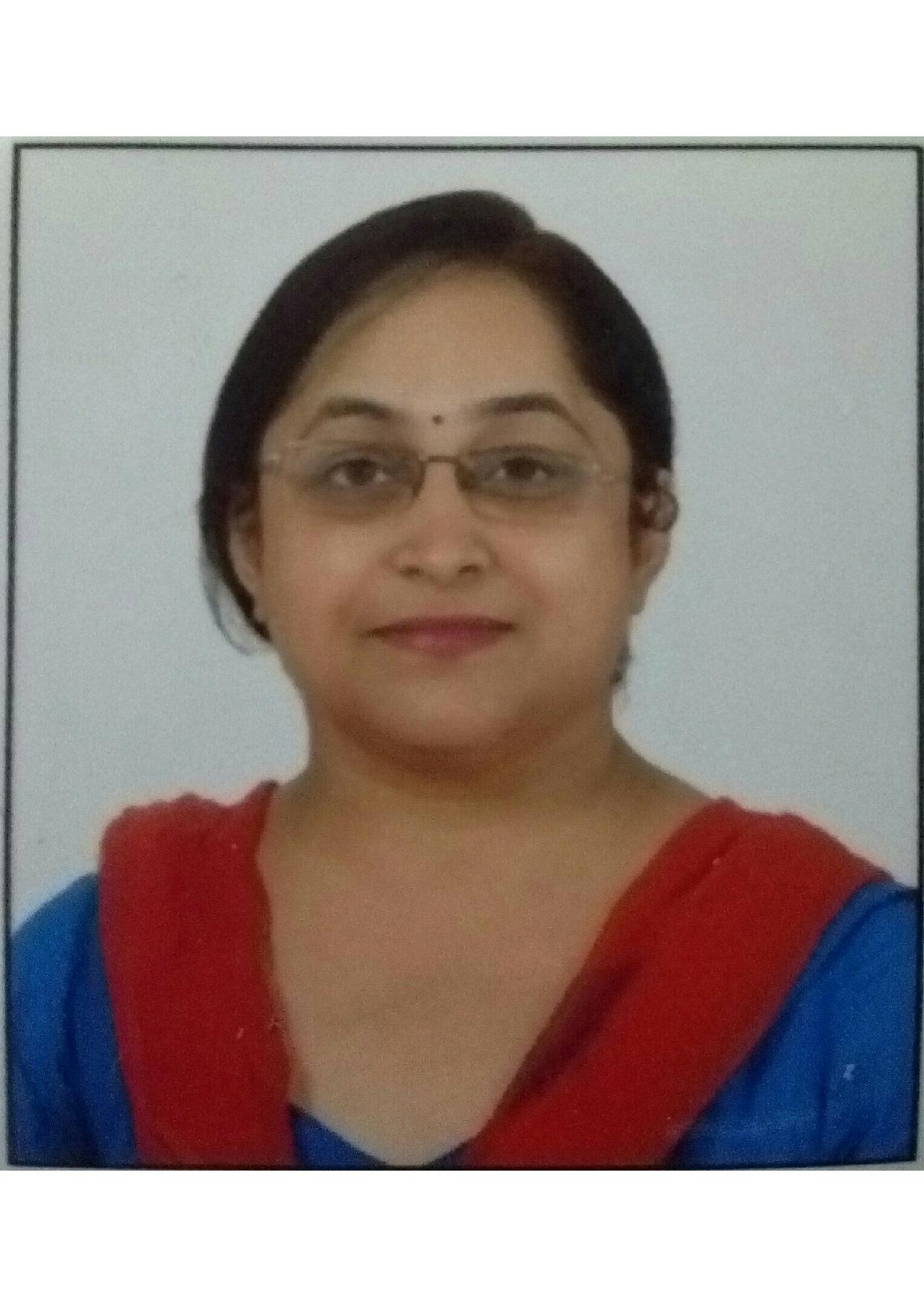
Title: Wind Tunnel Facilities in India - An Overview of the available Potential
KEYNOTE SPEAKERS
Dr. Deepshikha Shukla
Graphic Era (Deemed to be University), Dehradun, Uttarakhand, India
Abstract
Future India is poised for tall buildings and other wind sensitive structures. Accurate assessment of wind loads and response are based on Buildings and structures. The future of wind tunnel facilities in India looks promising and increasingly vital, particularly in the context of advancements in aerospace, automotive, civil engineering, and renewable energy sectors. Current discussion covers the details of the wind tunnel facilities in India, their detailed specifications, testing capacity, consultancy projects undergone so far and still more to go.
Biography
Dr. Deepshikha Shukla is an Associate Professor in the Department of Civil Engineering at Graphic Era (Deemed to be University), Dehradun, Uttarakhand, INDIA. With over 18 years of academic and research experience, Dr. Shukla specializes in Structural Engineering. She has published numerous research papers in reputed national and international journals and has been actively involved in guiding undergraduate, postgraduate and research students. Her research interests includes structural engineering, structural dynamics, seismic studies, wind engineering Dr. Shukla has also contributed to various funded projects and participated in academic collaborations at the national and international levels. She is known for her student-centric approach and commitment to academic excellence.

Title: SPEAKER
Generative Artificial Intelligence for Cyber Security
Farah Jemili
University of Sousse, Tunisia
Abstract
In the face of escalating cyber threats, the fusion of artificial intelligence (AI) with cybersecurity strategies has become a cornerstone for modern defense systems. This presentation, delivered by Dr. Farah Jemili, explores the pivotal role of generative AI in fortifying cybersecurity frameworks. As modern communication technologies generate vast amounts of data daily, the presentation addresses the pressing need to harness this data to safeguard Industry 4.0 infrastructures, which are increasingly vulnerable to cyber-attacks. With cyber-attack damages projected to reach $8 trillion in 2024 and escalate to $10.5 trillion by 2025, innovative solutions are essential.
The presentation outlines the current cybersecurity landscape, identifying key challenges such as data collection, storage, processing, and the accurate detection of cyber threats. It emphasizes the transformative potential of AI methodologies, including machine learning, deep learning, and generative learning, in developing robust intrusion detection systems and real-time threat response mechanisms.
A detailed examination of real-world AI applications in cybersecurity is provided, showcasing technologies like Cylance for malware prevention, AEG for automatic exploit generation, AI2 for predictive threat analysis, and IBM's Watson for IoT network analytics. The comparative study of various deep learning models highlights their distinct advantages and limitations in cybersecurity contexts.
Furthermore, the presentation discusses the integration of AI with other technological pillars such as cloud computing and big data, illustrating how these synergies enhance cybersecurity capabilities. The research contributes to understanding how AI can be leveraged to develop intelligent, adaptive, and resilient cybersecurity systems, ultimately aiming to mitigate the risks and impacts of cyber-attacks.
The presentation concludes with perspectives on future research directions and the evolving landscape of AI in cybersecurity, underscoring the critical role of continuous innovation and collaboration in this domain.
Biography
Farah JEMILI has completed her Ph.D. in 2010, from the National School of Computer Sciences (ENSI), Tunisia. Since 2010, she is an Assistant Professor at the Higher Institute of Computer Science and Telecom of Hammam Sousse (ISITCOM), Tunisia. She has been member of the Scientific Council of ISITCOM for 3 years (2011-2014), and Head of the Department of Computer Science at ISITCOM for 3 years (2017-2020). Her research interests include Artificial Intelligence, Cyber Security and Big Data Analysis. She served as a Reviewer for many international conferences and journals. She has published around 45 Research papers in international journals and conferences and has presented many invited and contributed Talks at international conferences.
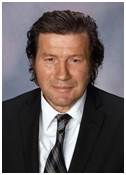
Title: The AI Embedded Cyber HigTech
Prof. Dr. Eduard Babulak
National Science Foundation, USA
Abstract
Given the current dynamic developments in the field of Cyber HughTech, Nano & Bio Technologies, Semiconductors, Very Large Scale Integration, New Materials, AI, Smart Medicine, and Humanoid Robotics, with the ubiquitous access to high-speed Internet 24/7, the Ultra-smart Cyberspace is becoming reality. The Smart Computational Systems are collecting, processing and analyzing a real-time medical data utilizing the Electronic Health Record (EHR) to fast treatment, prevention and healing of the wave of new viruses and diseases and ultimately safe human lives. The areas of research in the field of Sensor, Nano-Bio Technologies, Microelectronics, Computing and AI & Humanoid Robotics create a new platform for future e-Health utilizing new biomechanical humanoid devices. In light of currently ongoing developments of Covid-19 crisis, having effective real-time application of Ultra-smart Cyberspace, with applied AI & Robotics and Big Data will support critical live saving surgeries in Next generation tele-Medicine. Due to Covid-19, the humanity lives in the most dramatic times, yet despite of its most negative impact it does also inspire dynamic innovation, research and developments in the world of health, business, government, industry, plus., while promoting seamless creation of multidisciplinary teams of experts in the nation and worldwide. The author discuss the AI driven Third Millennium with current and future dynamic trends in research, innovation and developments of the AI Embedded Cyber HighTech, Computational Mechatronics, Electronics, Semiconductor & VLSI, New Materials, AI, Smart Health, and cutting-edge Humanoid Robotics that would provide support to save lives and to make best real-time decisions worldwide.
Biography
Professor Dr. Eduard Babulak is accomplished international scholar, researcher, consultant, educator, professional engineer and polyglot, with more than thirty years of experience. He served as successfully published and his research was cited by scholars all over the world. He serves as Chair of the IEEE Vancouver Ethics, Professional and Conference Committee. He was Invited Speaker at Oxford, Tokyo, University of Cambridge, MIT, Purdue Speaker Photo University, Yokohama National University and University of Electro Communications in Tokyo, Japan, Shanghai Jiao Tong University, Sungkyunkwan University in Korea, Penn State in USA, Czech Technical University in Prague, University at West Indies, Graz University of Technology, Austria, and other prestigious academic institutions worldwide. His academic and engineering work was recognized internationally by the Engineering Council in UK, the European Federation of Engineers and credited by the Ontario Society of Professional Engineers and APEG in British Columbia in Canada. He was awarded higher postdoctoral degree DOCENT – Doctor of Science (D.Sc.) in the Czech Republic, Ph.D., M.Sc., and High National Certificate (HNC) diplomas in the United Kingdom, as well as, the M.Sc., and B.Sc. diplomas in Electrical Engineering Slovakia. He serves as the Editor-in-Chief, Associate Editor-in-Chief, Co- Editor, and Guest-Editor. He speaks 16 languages and his biography was cited in the Cambridge Blue Book, Cambridge Index of Biographies, Stanford Who’s Who, and number of issues of Who’s Who in the World and America.
“ Will be updated soon...”
+91 9491 456 452
7-89-1-18, NVR LAYOUT, Madanapalle, Andhra Pradesh 517325, India
About Us
Global Scientific Guild organizes conferences and webinars to promote quality research and real world impact in an atmosphere of true international co-operation between scientists, doctors, professors, practitioners, engineers and industry by bringing together the world class renowned personalities to discuss the latest developments and innovations at one common platform.